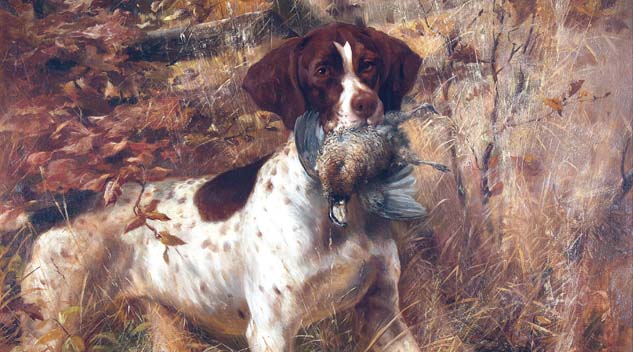#Impressive #Sale #Pennsylvania #American #Art #Freemans #Antiques #Arts #Weekly
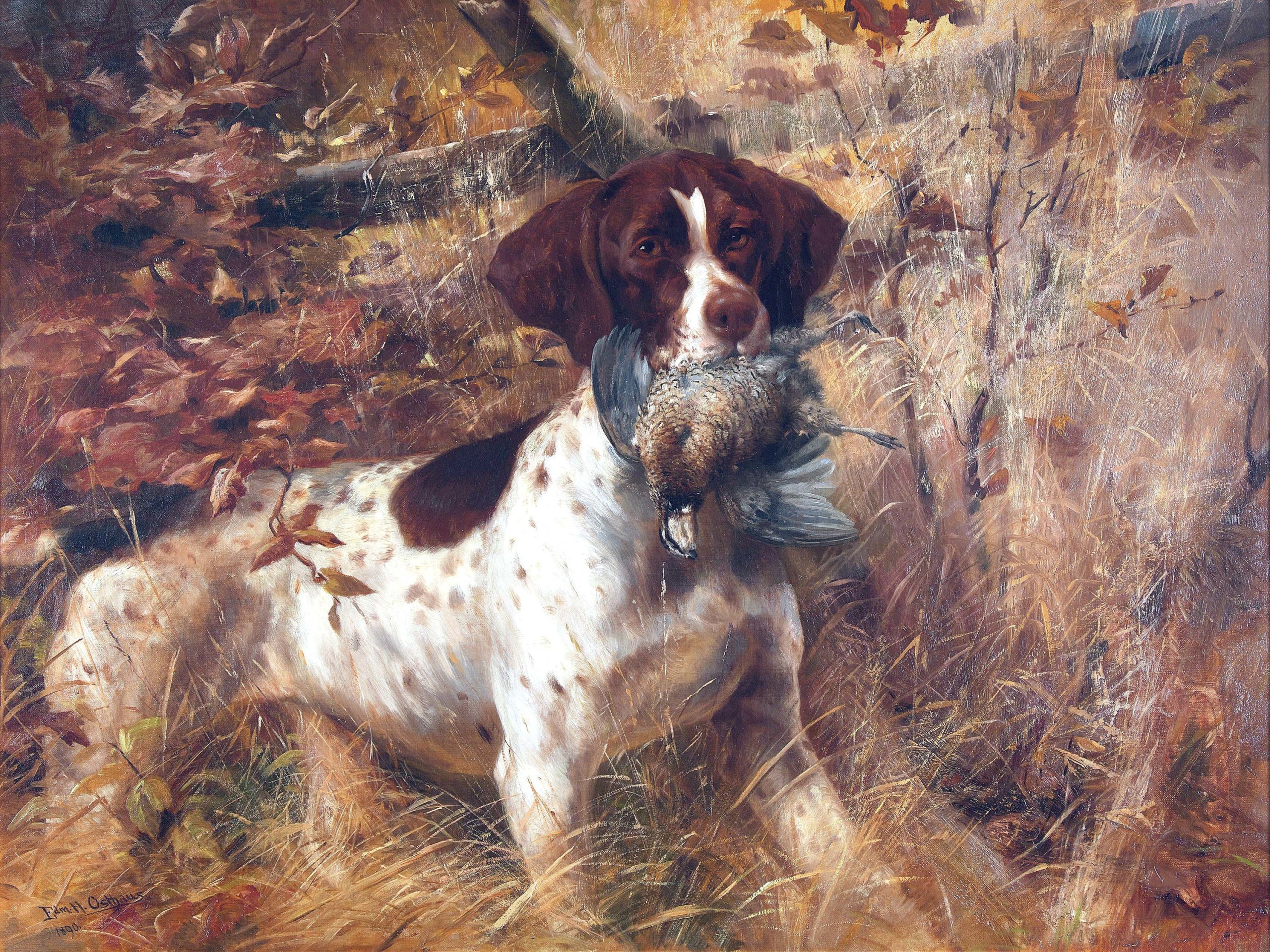
The sale’s top lot was “Pointer with Quail” by Edmund Henry Osthaus, 1890. The 27-by-36-inch oil on canvas painting earned $126,000 ($60/100,000).
Review by Carly Timpson; Photos courtesy Freeman’s Auctions
PHILADELPHIA — Freeman’s American Art and Pennsylvania Impressionists auction was conducted on December 3. With 359 registered bidders, the 101-lot sale saw a sell-through rate of around 70 percent. Freeman’s head of department for American Art and Pennsylvania Impressionists auctions, Raphaël Chatroux, shared that while it was not their best sale overall, the performances do reflect the current state of the market. Overall, the auction saw more interest from private collectors and not many dealers.
Despite any global events that may be affecting the art market, Chatroux emphasized a strong interest in a few main categories. The first of which was “fresh pieces that came from either reputable collections or fresh states.” He noted that the public’s desire for these pieces makes sense since collectors “always want to have that painting that has never seen the light of day.” One of these notable works was “Winter Holiday,” a 1909 oil painting by Edward Willis Redfield (1869-1965) depicting sledders on a hill with a cool blue river and mountains in the background. Exhibited just once in Philadelphia’s Woodmere Art Gallery in 1959, the painting has since remained in a Pennsylvania family’s private collection.
Another piece fresh to the market with provenance to several notable galleries, including Milch, Hirschl & Adler and Wildenstein & Co, was Childe Hassam’s (1859-1935) “Spring at East Hampton, Egypt Lane.” Selling for $88,200, this piece entered into its estimate window but did not make the lasting mark Chatroux thought it could have. In the current market, “some of the most traditional names are becoming more and more difficult. Even the big champions of American Impressionism, like Hassam, were struggling a bit and you can really notice a desire for fresh blood whether that is women artists or someone like Francis Speight.”
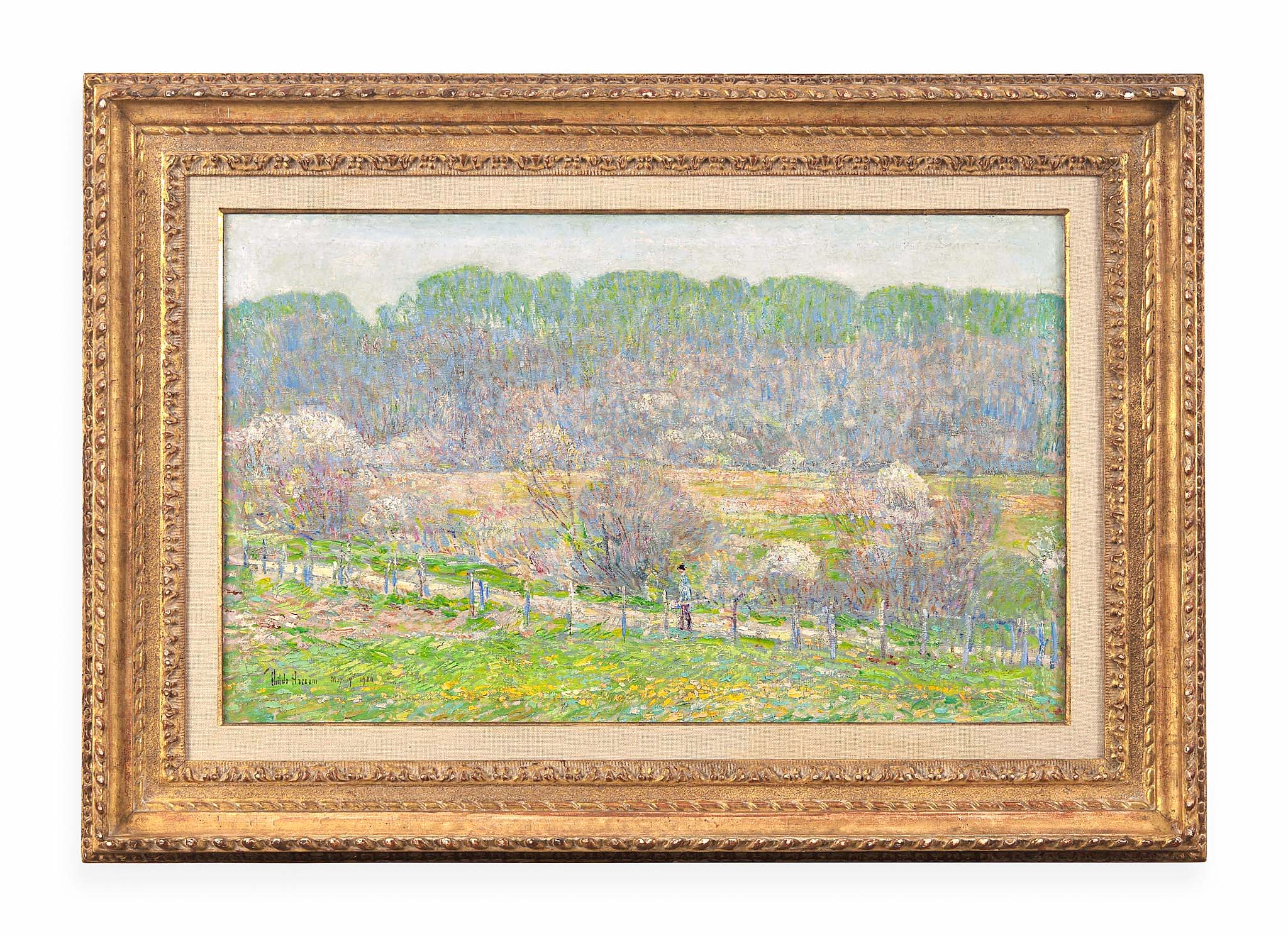
“Spring at East Hampton Egypt Lane,” signed “Childe Hassam May 19th, 1920,” oil on canvas, 15¾ by 25¾ inches, sold for $88,200 ($80/120,000).
Fortunately, three paintings by Francis Speight (1896-1989) were offered in the sale and they all outperformed expectations. The top, “Manayunk Bridge” sold for $63,000 compared to an $18,000 high estimate. This painting, a dark and cloudy rendition of a Pennsylvania rail bridge, was originally acquired by a private North Carolina collector and has never left the family. Other works by the artist included “Boys Playing Ball” (1973) and “Horseback Riding in Bucks County” (1983) which sold for $27,720 and $18,900, respectively. Emerging onto the market for the first time, these works all saw great interest from private collectors and some of the artist’s family members.
As Chatroux noted, another recognizable strength in the sale was paintings by women artists such as Emma Fordyce MacRae (1887-1974) and Jessie Arms Botke (1883-1971). For MacRae especially, Chatroux mentioned that there is “very healthy and hefty competition among private collectors,” as indicated by the four lots offered in this sale which all performed well above their estimates. MacRae’s 1927 painting “The Dancer” achieved $40,950, compared to estimates of $15/25,000. In previous sales this year, Freeman’s broke MacRae’s sale record three times and, as Chatroux shared, “Even after a big institution fought for and got a piece of her work, there’s still strong interests, mostly among private buyers, which is very encouraging to note.”
“White Peacocks and Datura” by Jessie Arms Botke, “an exemplar of the artist’s decorative, yet virtuoso mature style, offers collectors beauty and simplicity in equal measure.” Crafted with oil and gold leaf on board, the painting shows two white peacocks with long, trailing feathers, sitting among the vibrant green vines of the datura plant, belonging to the nightshade family. This contrasting piece in both color and subject elicited $63,000.
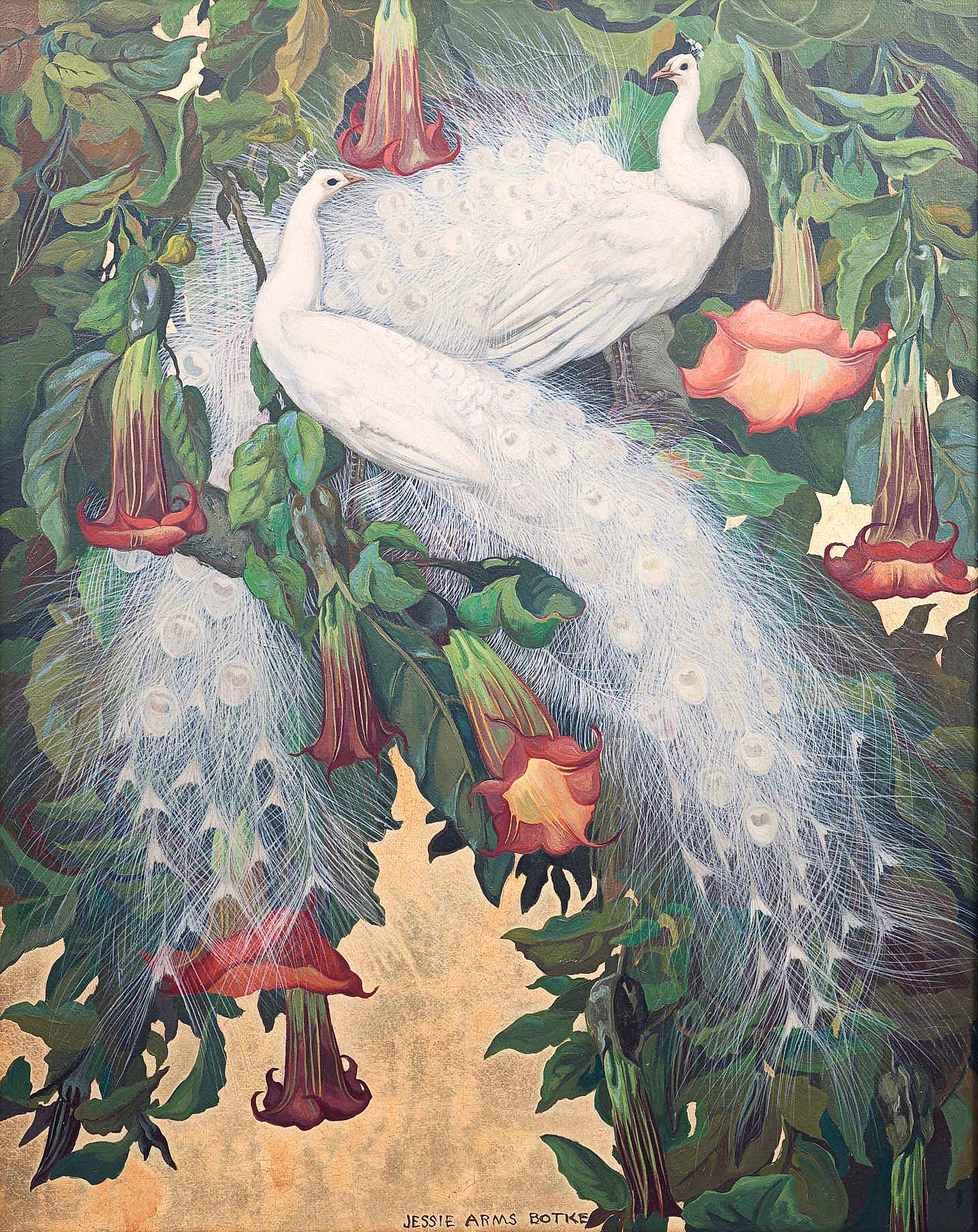
“White Peacocks and Datura” by Jessie Arms Botke, oil with gold leaf on board, 31½ by 25½ inches, sold for $63,000 ($40/60,000).
Quite different from other lots offered in the sale was “Small Triton Fountain” made by Carl Milles (Swedish, active in America, 1875-1955). The fountain features a 42-inch-tall bronze with pale verdigris patina triton perched atop a black ridged marble basin, scalloped and decorated with salamanders and acorns. Coming out of the Virginia Museum of Fine Arts where it had been displayed since 1954, the fountain did have some minor condition issues from being in use outdoors. “It stayed outside for a long time, yet people were still quite interested, and there was a healthy amount of international interest too. We had an interesting battle between two bidders, one online and the other on the phone. In the end, the phone bidder prevailed.” The fountain found a new home for $113,400, which is a record for this Milles model.
Something else that interested Chatroux was that pieces from the mid- to late Nineteenth Century seemed to perform very well. “It is an area that sometimes you think may not be as strong as it used to be, and by all means, the prices are not the same as before, but healthy competition for the earlier lots was nice to see.” Memorable sales from this timeframe include “Street Scene, India” by Edwin Lord Weeks (1849-1903), which stretched past its $25/40,000 estimate to achieve $69,300; the 1860 painting “Still Life with Fruit and Champagne on a Marble Ledge” by Severin Roesen (1815-1872), which sold for $47,250 to a buyer in the room; the eerie 1888 painting “Land’s End, Cornwall” by William Trost Richards (1833-1905), signed and dated, “Wm T. Richards. 88,” which went out at $44,100; and the similarly rocky ocean scape “Monhegan Cliff, Maine” by Alfred Thompson Bricher (1897-1908), circa 1896 which finished for $69,300.
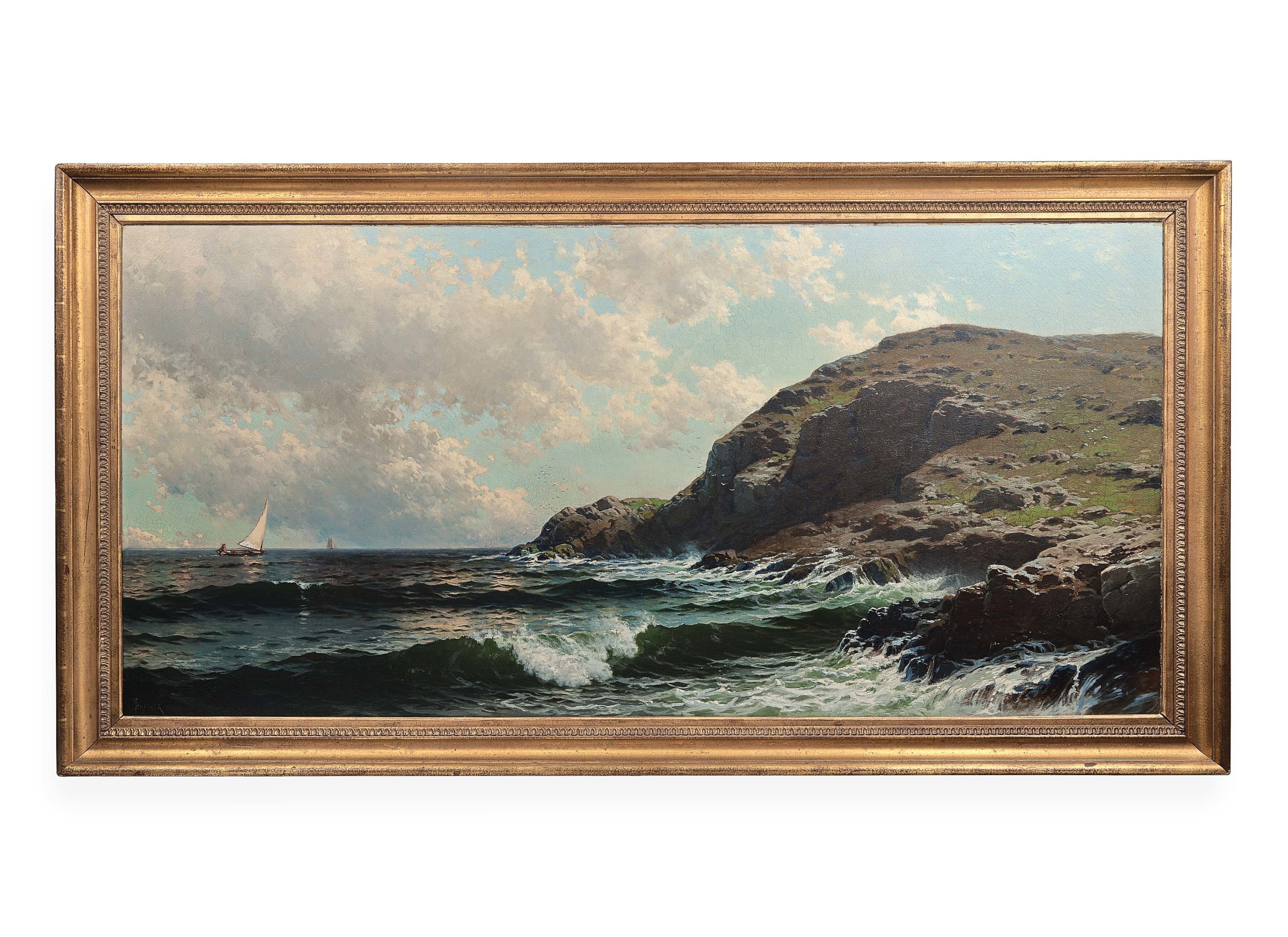
“Monhegan Cliff, Maine” by Alfred Thompson Bricher, circa 1896, oil on canvas, 30¼ by 63 inches, went out at $69,300 ($80/120,000).
Also fitting into this category of Nineteenth Century success stories was the top lot of the day. “Pointer With Quail” was like a championship trophy for the advisor who has been after it for his clients for some time. “It is going to a private collector, and they are just thrilled with the purchase. It is a known work of art that they had missed several times in the past, so they were quite happy with the sale.” Executed by Edmund Henry Osthaus (1858-1928), the 27-by-36-inch oil on canvas painting depicts an attentive brown and white hunting dog with a quail in its mouth. “Pointer With Quail” was captured for $126,000.
“Teddy at the Typewriter,” a 1932 work by Guy Pène Du Bois (1884-1958) depicting an elegant young woman seated and typing on a typewriter, sold for $63,000. This painting was exhibited twice in New York and once in Pennsylvania; it was also featured in two art magazines in 1932. Achieving the same price as “Teddy” was “Garbisch Family Portrait (Version I)” by John Koch (1909-1978). Originating from the estate of a member of the Garbisch family, this piece crossed the auction block for the first time and brought more than double its estimate.
Like many of Daniel Garber’s (1880-1958) works, “September Morning” used warm pastel colors to capture the depth of a landscape. In this circa 1938 painting, Garber illustrated multiple scattered houses and barns among rolling hills and trees and included three cows grazing in the foreground. After being passed around from estates and collections for some years, the painting has found its newest home with a buyer for $94,500.
A contemporary piece by Bo Bartlett (b 1955) finished among the top lots. Featuring two women facing away observing the airshow and two children wrestling in the grass, the 2015 oil on linen “Airshow” comes from a private collection in Connecticut and was sold for $63,000.
All prices quoted include the buyer’s premium as reported by the auction house. For information, www.freemansauction.com.

